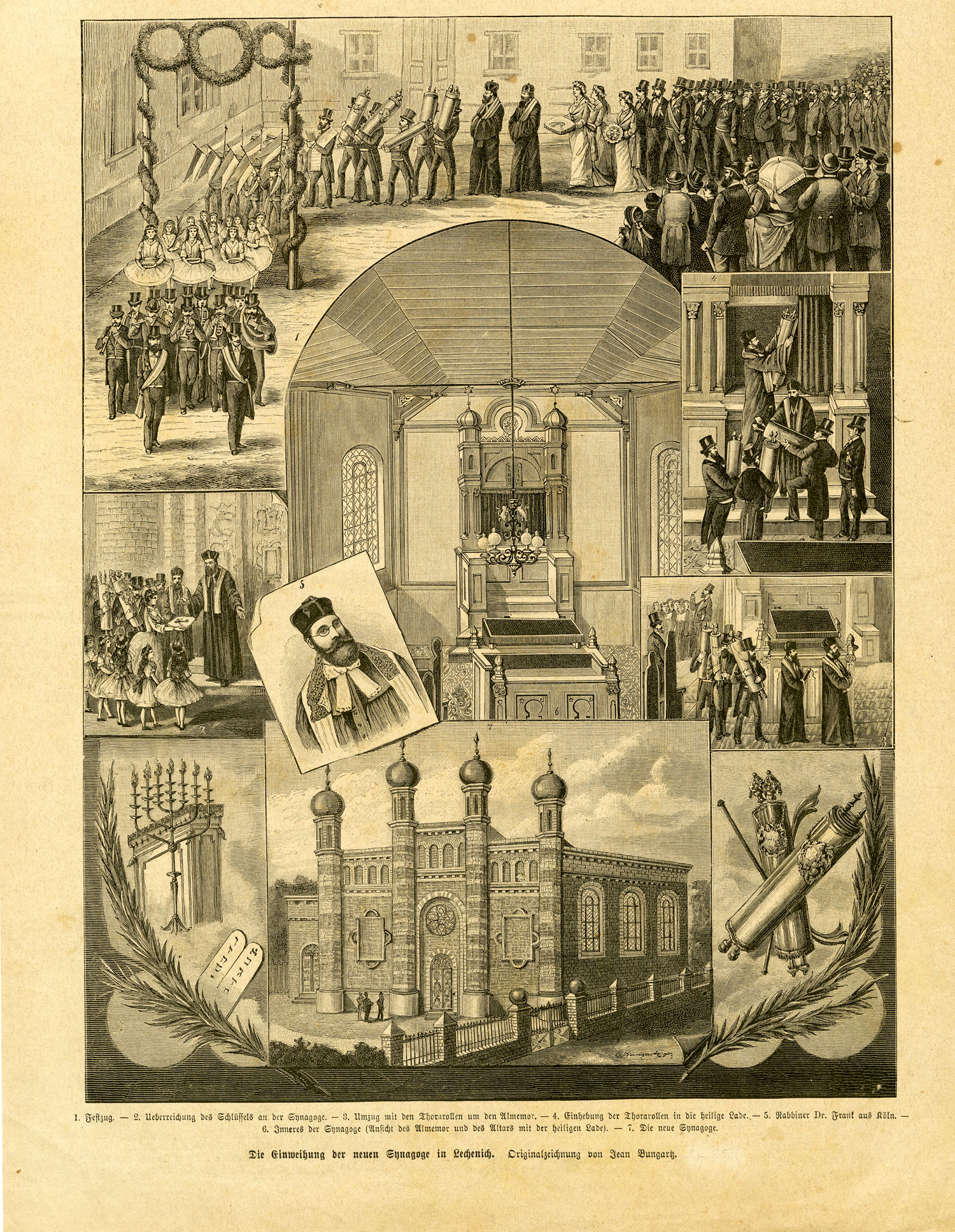Jean Bungartz’s (1854–1934) illustration of the inauguration of the synagogue in Lechenich on September 10, 1886, depicts the stages of the event’s procession and highlights its significance to the local Jewish community and the broader population as well. The scene at the top shows participants proceeding from the 17th-century prayer house to the congregation’s new and larger building, with seats for 60 men and 46 women. Though Jews had lived in the town since the Middle Ages, the Jewish population peaked at 171 in 1895.
The dedication was clearly a public affair; at the head of the procession is an orchestra, followed by groups of boys and girls walking under a garland-covered arch in front of men bearing the Torah scrolls. In the middle of the procession are Rabbi Abraham Frank (1839–1917) and Cantor Isidor Blumenthal of the Cologne Jewish community. Rabbi Frank’s most important task on this day was preaching an edifying sermon; he preached on the verse “Except that the Lord build the house, they labor in vain that build it; except that the Lord keep the city, the watchman waketh but in vain” (Psalm 127:1). These two functionaries are followed by a small group of women bearing the key to the new synagogue on a velvet cushion. At the end of the procession come members of the Lechenich synagogue community, as well as co-religionists who have journeyed “from near and far” for this important event. A cluster of people in the lower right corner indicates that the occasion was not exclusively for the Jewish community; this is a group of non-Jewish onlookers. Non-Jewish guests attended the dedication service and, after the religious ceremony, they were welcomed at a secular celebration featuring food, dance, and musical and theatrical performances.
The Lechenich synagogue, designed in a Moorish style inspired by the Leopoldstädter Tempel in Vienna, was set on fire on Kristallnacht, November 9, 1938, and later leveled.
